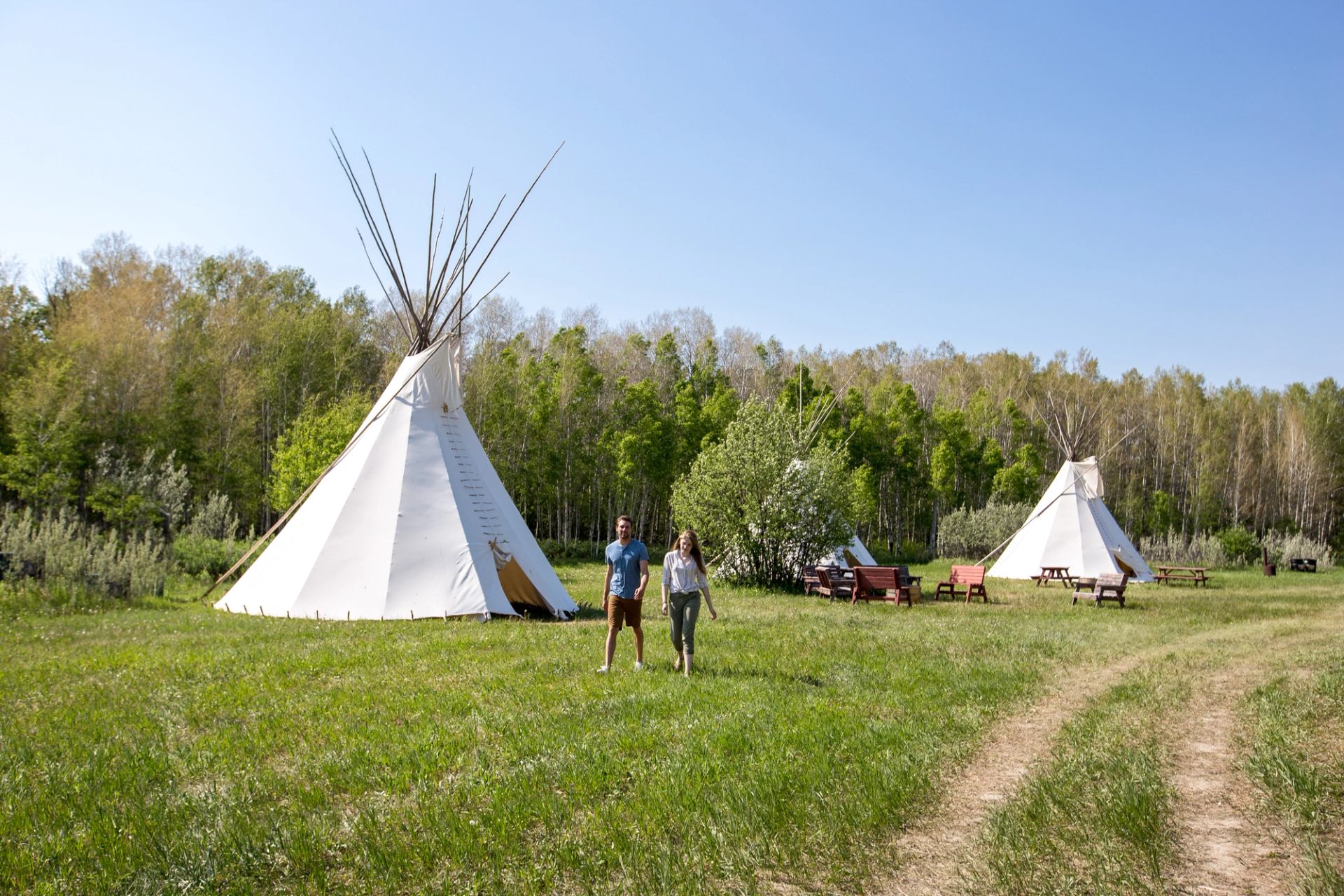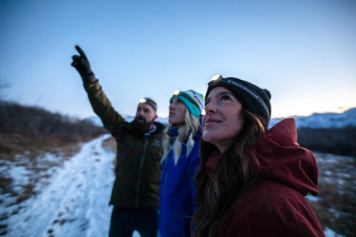An important niche within the sector, Indigenous tourism has the power to change perspectives and preserve culture, language, and traditions.
That’s the goal of Blackfoot Crossing Historical Park, site of the signing of Treaty 7 and a designated National Historic Site. World renowned for its cultural, educational and entertainment centre, park visitors can immerse themselves in experiences that preserve Blackfoot history and culture and break down stereotypes through stories, activities, and personal relationships.
The park reached out to Travel Alberta’s tourism investment team last year for help in expanding its popular tipi camping experience.
Set in the picturesque Bow Valley, the Chief Crowfoot Tipi Village is the focal point of Blackfoot Crossing’s outdoor activities. Prior to its successful tourism investment application, the village included six tipis for overnight guests, accommodating six to eight people each.
With funding from Travel Alberta, 13 new tipis were created, providing a range of overnight experiences from basic to luxury accommodations.
Created and curated by Kenneth Healy, who is renowned for his tipi exhibits at the Royal Alberta Museum and Sheldon M. Chumir Health Centre, the tipis include wood stoves, cots/beds and bedding, buffalo hides, and camping supplies and accessories.
The expansion of the tipi village is anticipated to bring an additional $1M in revenue and 31,000 overnight visitors to the park over the next five years.
Shannon Bear Chief, Office Manager at Blackfoot Crossing, says the heritage landscape of the park, the rugged tipi camping and raw storytelling all create an authentic experience for visitors, showing what everyday life was like for Blackfoot families.
“We’re now able to give the full, authentic experience of a tipi stay,” she says, noting that there are few other similar experiences in southern Alberta, and none with the experience of being a historical site.
Tipi camping was one of the most requested experiences at the park, but before this expansion, the park couldn’t keep up with demand or accommodate large overnight groups. Now, they can offer accommodations for up to 75 guests each night.
In addition to the tipis, Travel Alberta’s investment will allow Blackfoot Crossing to focus on expanding its overall program offerings, including a children’s adventure camp, archaeological camp, performance camp, trails and landscaping.
“In a couple years’ time, we could even be looking at tripling the size of the park,” Shannon says.




